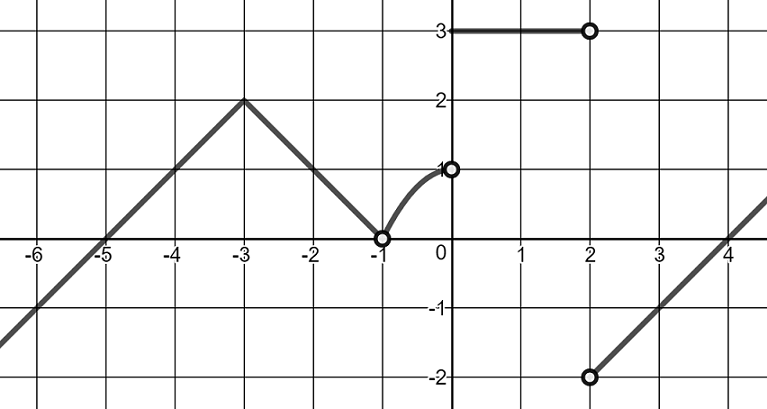Here is an opportunity for you to practice limits.

Consider the statement below, and then indicate whether it is sometimes, always, or never true.
‘‘If exists, then ”
This statement is
sometimesalwaysnever true.Consider the statement below, and then indicate whether it is sometimes, always, or never true.
‘‘If and exists, then ”
This statement is
sometimesalwaysnever true.Use the data you gathered in the first exercise to help you answer this question. You may also want to review how one-sided and two-sided limits relate to one another using the previous card.
Consider the statement below, and then indicate whether it is sometimes, always, or never true.
‘‘If , then may not exist.”
This statement is
sometimesalwaysnever true.Use the data you gathered in the first exercise to help you answer this question. You may also want to review how one-sided and two-sided limits relate to one another using the previous card.
Does the graph of support your previous prediction that ?
In this case, the table above and the graph of both suggest that . In the next section, you will learn how to calculate that without having to rely on tables and graphs. In the meantime, your main tool to evaluate limits will be to use graphs or tables, but make sure to be extra careful when doing so: tables and graphs can be misleading!
Does the graph of support your previous prediction that ?
Even though the table you filled out seems to indicate that , it turns out that this limit actually does not exist, as the graph of shows. This is yet another example of why tables are not a fool-proof method for evaluating limits. Case in point: be very careful when using tables to make conclusions about limits!